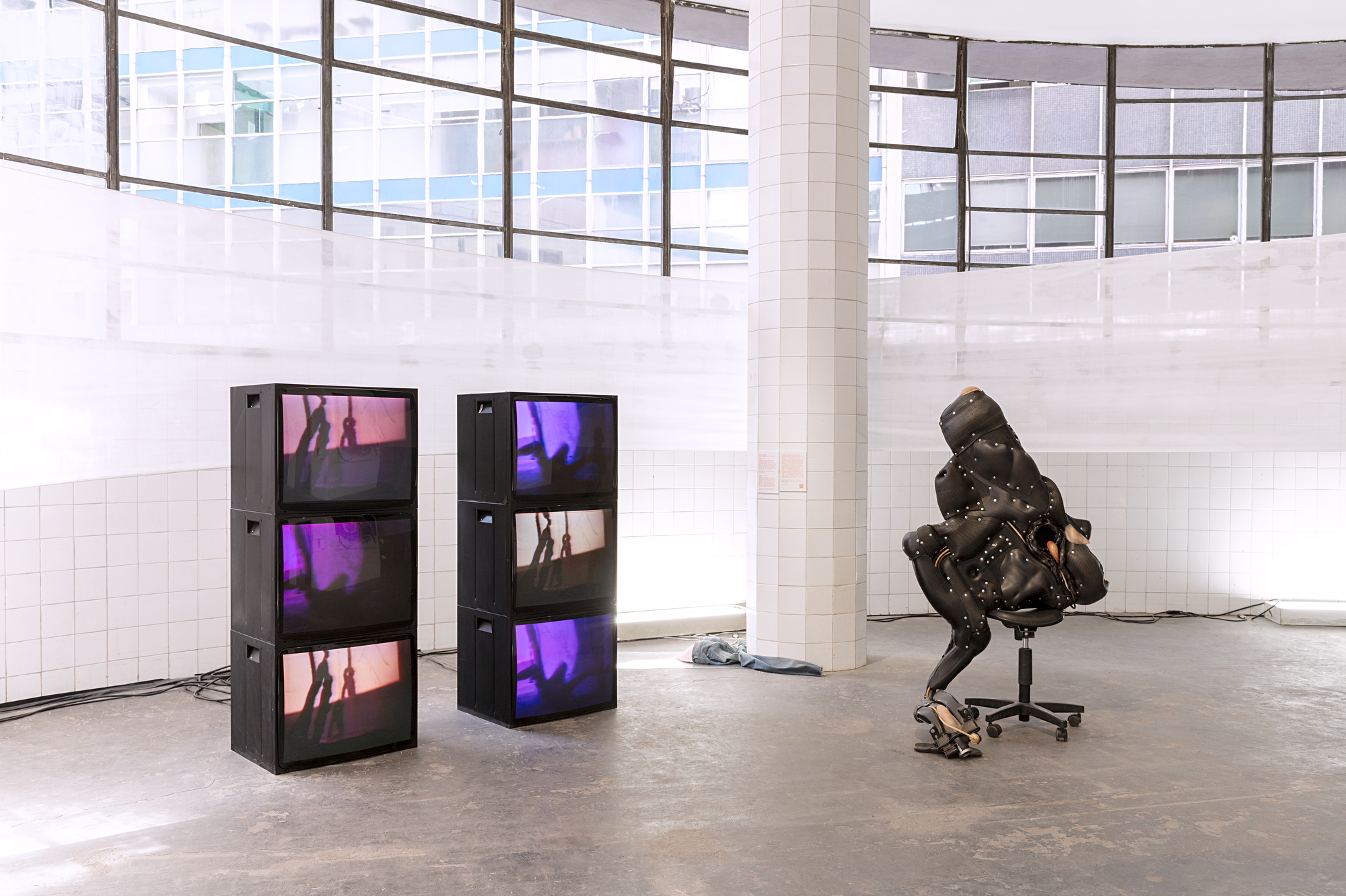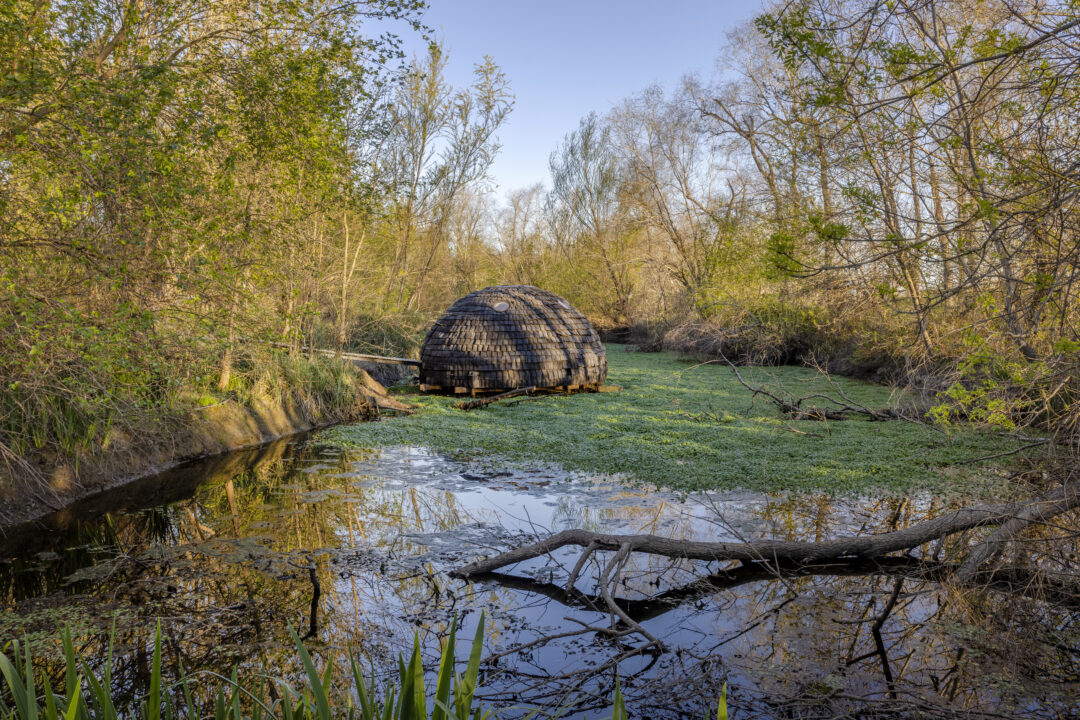Diego Bianchi

‘Anything is possible on a mountain of rubble’
‘To celebrate the indomitable strangeness of reality.’
Marcelo Cohen, Manières de parler d’un objet B
With a body of work that is as attentive to its context of creation as to its reception, Diego Bianchi, the Argentinian artist in residence for twelve months at the Cité internationale des arts, can only arouse our curiosity – for this reason and many others that will soon be mentioned – as to what he will produce in his Parisian studio. How will this period of immersion in an urban landscape, very different from that of Buenos Aires where he usually works, affect his activity? If, as the art historian Inés Katzenstein puts it, ‘Bianchi finds little disasters everywhere and records them like a comic ethnographer1’, there is a good chance that his works produced during this residency will reveal something surprising about us.
In fact, the artist has already had the opportunity to work in Paris, where he has exhibited, notably in 2015 at the Maison Rouge, in a group exhibition aptly entitled ‘My Buenos Aires’, and also at the Jocelyn Wolf Gallery, which represents him in France2. He has also exhibited in other French cities, for example in Lyon, during the 2011 biennial, whose title, ‘Une beauté terrible est née’ (A terrible beauty is born), particularly suited him, and more widely all over the world, from Miami to Madrid. He has also done a few residencies in the United States, in Maine, and in Brazil, in Sao Paulo.
But this residency is the longest. What will come out of it, knowing that his work is not linear, but rather inhabited by themes, motifs and processes that are intertwined?

Diego Bianchi has always worked with existing objects rather than with materials intended for art. After working as a graphic designer, he turned to art, first by taking photos in the street. His attention was drawn to objects and arrangements that presented themselves as ready-made sculptures, or which he adjusted just a little so that they appeared as such; this was in the early 2000s, after the great economic and social crisis of December 2001 (“an unemployment rate of 20%, 14 million people living below the poverty line – out of a total population of 37 million – a loss of purchasing power of almost 50% in five years3“) that led Argentines to revolt and loot. The timing was crucial. According to the writer Diego Valeriano, what happened ‘continues to transform the territories, to liberate them, to make them more difficult every day, more festive every day4’. Bianchi’s early works already took note of these events.
He perfected his skills in the field of sculpture and installation by attending artistic sessions organised by artists, called ‘clinica de obra’, which are the most widespread means of transmission in art and literature in Argentina, less formal than the fine arts system with which we are familiar5. Thus, from the photography of spontaneous objects and sculptures, Bianchi has come to the creation, through the arrangement of collected elements, of organic forms. The objects he favours are twisted, deformed, degraded by their previous uses, thus evoking the bodies of those who used them. In a text on this subject, the philosopher Julieta Massacese goes even further: ‘The way we treat bodies is a question that Bianchi’s art begins to answer with a diversion: how do we treat things?6’ His works, from the beginning to the present day, explore the continuity between objects and bodies. For example, in the exhibitions ‘Shutdown’ in 2016 at the Barro Gallery in Buenos Aires or ‘The Stomach and the Port’ at the Liverpool Biennial in 2021, pipes emerge from containers, unfolding in the spaces, becoming like giant intestines on display, to which the intestines hidden in human bodies – performers are often at work to make it felt – could potentially connect, also emancipating themselves from their envelope. This desire to put the inside outside has something a little monstrous about it, in the idea and in the forms. It is a monstrosity that can recall those of certain figures in the films of his compatriot Liv Schulman; and, as with her, the monstrosity is funny and liberating.

Diego Bianchi has always worked with existing objects rather than with materials intended for art. After working as a graphic designer, he turned to art, first by taking photos in the street. His attention was drawn to objects and arrangements that presented themselves as ready-made sculptures, or which he adjusted just a little so that they appeared as such; this was in the early 2000s, after the great economic and social crisis of December 2001 (“an unemployment rate of 20%, 14 million people living below the poverty line – out of a total population of 37 million – a loss of purchasing power of almost 50% in five years3“) that led Argentines to revolt and loot. The timing was crucial. According to the writer Diego Valeriano, what happened ‘continues to transform the territories, to liberate them, to make them more difficult every day, more festive every day4’. Bianchi’s early works already took note of these events.
He perfected his skills in the field of sculpture and installation by attending artistic sessions organised by artists, called ‘clinica de obra’, which are the most widespread means of transmission in art and literature in Argentina, less formal than the fine arts system with which we are familiar5. Thus, from the photography of spontaneous objects and sculptures, Bianchi has come to the creation, through the arrangement of collected elements, of organic forms. The objects he favours are twisted, deformed, degraded by their previous uses, thus evoking the bodies of those who used them. In a text on this subject, the philosopher Julieta Massacese goes even further: ‘The way we treat bodies is a question that Bianchi’s art begins to answer with a diversion: how do we treat things?6’ His works, from the beginning to the present day, explore the continuity between objects and bodies. For example, in the exhibitions ‘Shutdown’ in 2016 at the Barro Gallery in Buenos Aires or ‘The Stomach and the Port’ at the Liverpool Biennial in 2021, pipes emerge from containers, unfolding in the spaces, becoming like giant intestines on display, to which the intestines hidden in human bodies – performers are often at work to make it felt – could potentially connect, also emancipating themselves from their envelope. This desire to put the inside outside has something a little monstrous about it, in the idea and in the forms. It is a monstrosity that can recall those of certain figures in the films of his compatriot Liv Schulman; and, as with her, the monstrosity is funny and liberating.

*The title of the article is taken from that of a performance by the artist, Todo es posible sobre una montaña de escombros, in the public space in Buenos Aires in 2018.
**The quotation at the top, ‘A festejar la indomitable rareza de lo real’, is taken from the text ‘Maneras de hablar de un objeto B’ published in the monographic catalogue Enlarge. Diego Bianchi 2003-2010, Buenos Aires, Galeria Alberto Sendrós, 2011, p. 211.
***The translations of the quotations are by the editors.
1Inés Katzenstein, ‘Irreversible’, Enlarge, Buenos Aires, Galeria Alberto Sendrós, 2011, p. 265
2 The artist’s residency at the Cité internationale des arts is the result of a partnership with the Antoine de Galbert Foundation, formerly the Maison Rouge. As for the exhibitions at the Jocelyn Wolf Gallery, an article by Inés Dahn published in 02 in 2019, notably reports on Soft Realism.
3 See, among others, Carlos Gabetta’s analysis in January 2002, ‘Crise totale en Argentine’ in Le Monde diplomatique, p. 3
4 Diego Valeriano, ‘El 2001 sigue en la Calle’, RUB. Perspectivas sobre la obra de Diego Bianchi, Buenos Aires, Temblores Ediciones, 2019, p. 279
5 In a lecture given at the Maison Rouge during the exhibition ‘My Buenos Aires’, the curator Florencia Cherñajovsky explains the specificity of these workshops: https://www.dailymotion.com/video/x2vkem4
6 Julieta Massacese, ‘Usos y dimensiones del cuerpo’, RUB. Perspectivas sobre la obra de Diego Bianchi, op. cit., p. 97
7 Claire Bishop, Towards a Radical Museum: Reflections on Alternative Museology, published in English in 2013, translated into French and published by MkF éditions in 2021.
Head image : Vue de l’exposition / Exhibition view Diego Bianchi, Pivô – Arte e Pesquisa São Paulo, 2024. Courtesy Pivô & Diego Bianchi. Photo : Everton Ballardin.
- Share: ,
- By the same author: Lou Masduraud, Sean Scully, Peter Friedl,
Related articles
Biennale Son
by Guillaume Lasserre
Lou Masduraud
by Vanessa Morisset
Bharti Kher
by Sarah Matia Pasqualetti